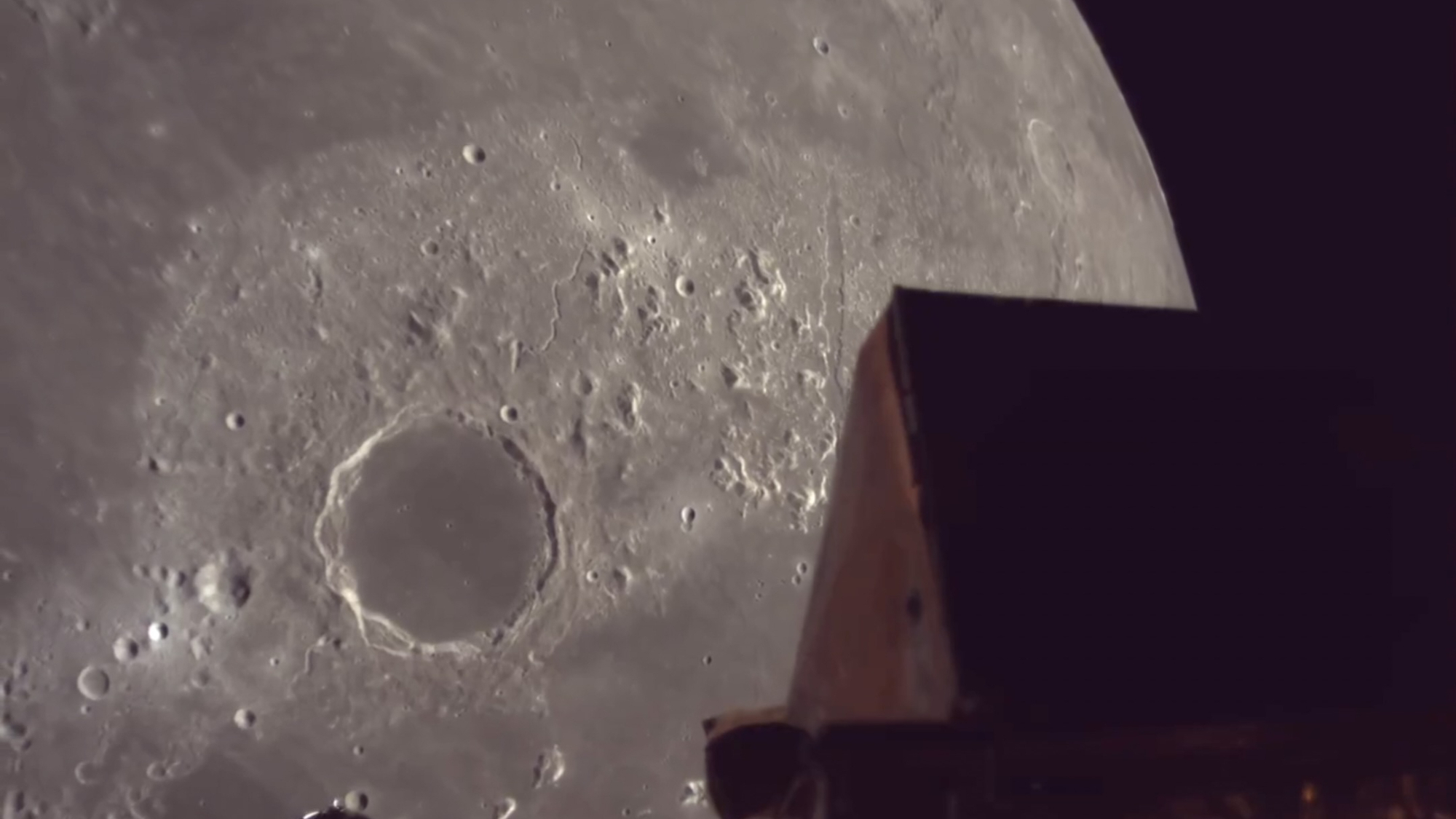
Using a quirk of quantum mechanics, researchers have created a beryllium crystal capable of detecting incredibly weak electromagnetic fields. The work could one day be used to detect hypothetical dark matter particles called axions.
The researchers created their quantum crystal by trapping 150 charged beryllium particles or ions using a system of electrodes and magnetic fields that helped overcome their natural repulsion for each other, Ana Maria Rey, an atomic physicist at JILA, a joint institute between the National Institute of Standards and Technology and the University of Colorado Boulder, told Live Science.
Related: The 18 biggest unsolved mysteries in physics
When Rey and her colleagues trapped the ions with their system of fields and electrodes, the atoms self-assembled into a flat sheet twice as thick as a human hair. This organized collective resembled a crystal that would vibrate when disturbed by some outside force.
"When you excite the atoms, they don't move individually," Rey said. "They move as a whole."
When that beryllium "crystal" encountered an electromagnetic field, it moved in response, and that movement could be translated into a measurement of the field strength.
But measurements of any quantum mechanical system are subject to limits set by the Heisenberg uncertainty principle, which states that certain properties of a particle, such as its position and momentum, can't simultaneously be known with high precision.
Get the Space.com Newsletter
Breaking space news, the latest updates on rocket launches, skywatching events and more!
The team figured out a way to get around this limit with entanglement, where quantum particles' attributes are inherently linked together.
"By using entanglement, we can sense things that aren't possible otherwise," Rey said.
In this case, she and her colleagues entangled the motions of the beryllium ions with their spins. Quantum systems resemble tiny tops and spin describes the direction, say up or down, that those tops are pointing.
When the crystal vibrated, it would move a certain amount. But because of the uncertainty principle, any measurement of that displacement, or the amount the ions moved, would be subject to precision limits and contain a lot of what's known as quantum noise, Rey said.
To measure the displacement, "we need a displacement larger than the quantum noise," she said.
Entanglement between the ions' motions and their spins spreads this noise out, reducing it and allowing the researchers to measure ultra-tiny fluctuations in the crystal. They tested the system by sending a weak electromagnetic wave through it and seeing it vibrate. The work is described Aug. 6 in the journal Science.
The crystal is already 10 times more sensitive at detecting teensy electromagnetic signals than previous quantum sensors. But the team thinks that with more beryllium ions, they could create an even more sensitive detector capable of searching for axions.
Axions are a proposed ultralight dark matter particle with a millionth or a billionth the mass of an electron. Some models of the axion suggest that it may be able to sometimes convert into a photon, in which case it would no longer be dark and would produce a weak electromagnetic field. Were any axions to fly through a lab containing this beryllium crystal, the crystal might pick up their presence.
"I think it's a beautiful result and an impressive experiment," Daniel Carney, a theoretical physicist at Lawrence Berkeley National Laboratory in Berkeley, California, who was not involved in the research, told Live Science.
Along with helping in the hunt for dark matter, Carney believes the work could find many applications, such as looking for stray electromagnetic fields from wires in a lab or searching for defects in a material.
Originally published on Live Science.
Join our Space Forums to keep talking space on the latest missions, night sky and more! And if you have a news tip, correction or comment, let us know at: community@space.com.

Adam Mann is a journalist specializing in astronomy and physics stories. His work has appeared in the New York Times, New Yorker, Wall Street Journal, Wired, Nature, Science, and many other places. He lives in Oakland, California, where he enjoys riding his bike. Follow him on Twitter @adamspacemann or visit his website at https://www.adamspacemann.com/.

